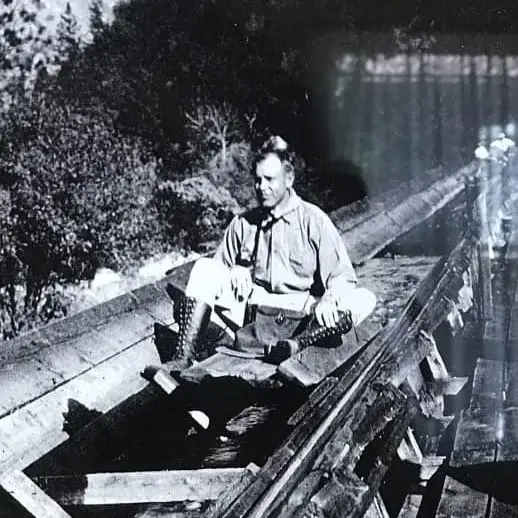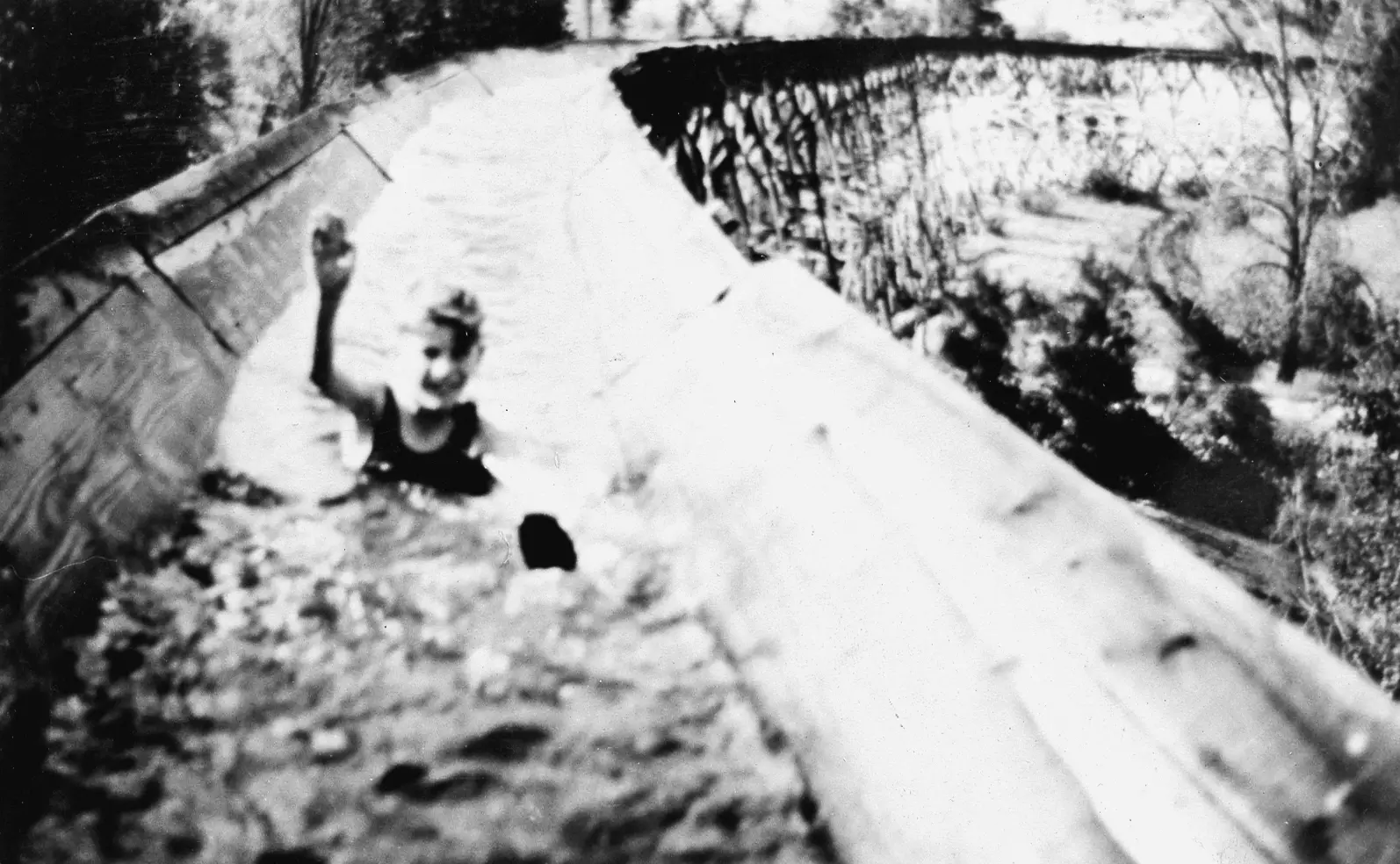During the 33-year existence of the flume, which gave birth to Madera, more than one billion feet of lumber, floated down the big trough from the mountains toward the mill near where Millview School now stands.
Built in 1876, by the California Lumber Company, the V-flume followed along mountainsides, through steep canyons, and often had to utilize trestles that were more than 60 feet in height.
Falling into disrepair, the flume was rebuilt in 1899, after being acquired by the Madera Sugar Pine Lumber Company. The new structure ran from Sugar Pine, south to Fresno Flats (Oakhurst) and from there down to Madera, over a 54-mile route.
At 4 p.m. on Saturday afternoon, Oct. 27, 1900, the citizens of Madera celebrated the completion of the rebuilding project with a community barbecue.
During the work week, the loading crews which were primarily Chinese and Mexican strapped the rough cut lumber into bundles at the mill in Sugar Pine, and a force of about 35 “flume herders” then shepherded the “flocks” of timber down the V-shaped trough.
The herders remained at the flume during the entire lumber season. They lived in little cabins, which were called flume houses or stations. Their main responsibility was to keep the lumber from jamming up and to watch for leaks or breaks in the flume. Each herder had a section of the flume for which he was responsible.
There were 10 flume houses along the 54-mile route, and they were spaced from 2 1/2 to 7 miles apart. Some of the stations housed only one herder, while in others, eight or ten men spent the season.
From Sugar Pine, the flume stations were located in such exotic places as Salt Springs, Poison Switch, Confidence, Zuber, Ellerbrock, French Graveyard, Ralls, Chinese Store, 12 Mile House, and Six Mile House.
The flume tender’s life was most of the time simply lonely, but at times there was danger.
Trying to walk on the slippery catwalk that ran along the flume was treacherous. Sometimes the herder found himself 60 feet or more above the ground, and it didn’t take much for a herder to be dashed to pieces on the rocks below. Several tenders lost their lives this way. A telephone line was strung along the length of the flume to keep the herders in communication with each other.
At the end of the season, which was sometime after Thanksgiving, the flume herders closed up shop and packed their bags. They put their gear into a “flume boat” and proceeded to Madera with the last of the lumber.
The flume boats were a common sight in the Sugar Pine flume. In addition to the herders, repair crews and lumberjacks were known to enjoy quick, cheap transportation to some point below. For the most part, these excursions took place in the evening hours, after all of the lumber for that day had been transported.
A ride down the flume would surely rival the best that the modern-day amusement park has to offer. In order for the flume to perform its task, it had to carry water in a uniform manner, and it was determined that the fall had to be one inch per 16 feet or 27 feet per mile.
On some of the grades, the speed reached 50 miles per hour. Sometimes the flume boat would literally outrun the water, in which case the boat hit dry boards, only to be soon engulfed by the force of the water which was so close behind.

Male workers were not the only ones to ride the flume. On one occasion the daughter of Return Roberts, one of the directors of the lumber company, took a 16-mile trip on the waters of the flume. Occasionally young boys would gain the nerve to try this giant water slide. History even records the time in 1910 when a cow rode the flume to Madera.
The most dangerous part of their journey came on the way to Salt Springs; the flume crossed “Chew Grade” at that point. This half-mile-long descent was so named because it crossed the land of one Ah Chew, a Chinese tenant farmer. The flume ran across a deep ravine on a 65-foot high trestle there.
After Salt Springs, jam-ups were fairly common. Sometimes a nail would work up through the bottom of the trough and make the ride a bit rough. At other times the culprit might be a loose board or a weakened timber. All in all, however, the lumber flume did its job. It was a very efficient means of transporting lumber out of the mountains, and it gave many adventurous teenagers the ride of their lives.
Originally published in the Madera Tribune




